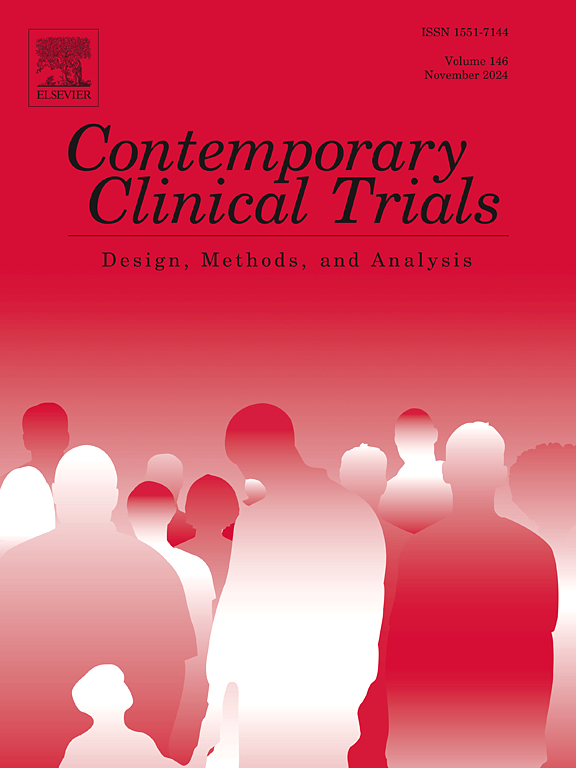社会经济弱势患者参与癌症临床试验帮助进行有针对性干预的风险模型。
IF 2
3区 医学
Q3 MEDICINE, RESEARCH & EXPERIMENTAL
引用次数: 0
摘要
背景:在癌症患者中,收入较低的患者参与临床试验的可能性较小。尚未对可能造成这种差异的变量进行广泛的评价。方法:我们使用了2014年、2017年和2020年健康信息国家趋势调查(hint)数据库中的数据,调查年份包括癌症患者是否参加临床试验的问题。我们调查了21个人口统计、社会经济、行为、地理和健康信息问题。我们推导了一个风险模型,使用最佳子集选择和k-fold交叉验证的训练/验证方法来预测临床试验的参与。采用Logistic回归分析。结果:我们检查了N = 1023名家庭收入的参与者。结论:我们开发并验证了一个5变量风险模型,该模型确定了一大批低收入个体参与试验的风险较低。这些发现可以帮助识别可能受益于额外支持的患者,以指导治疗试验决策过程。本文章由计算机程序翻译,如有差异,请以英文原文为准。
Cancer clinical trial participation in socioeconomically vulnerable patients; A risk model to aid in targeted interventions
Background
In patients with cancer, those with lower incomes are less likely to participate in clinical trials. A broad-based evaluation of variables that could contribute to this disparity has not been conducted.
Methods
We used data from Health Information National Trends Survey (HINTS) databases for survey years 2014, 2017, and 2020, the survey years that included questions about whether patients with cancer participated in a clinical trial. We examined 21 demographic, socioeconomic, behavioral, geographic, and health information questions. We derived a risk model to predict clinical trial participation using a training/validation approach with best subset selection and k-fold cross-validation. Logistic regression was used.
Results
We examined N = 1023 participants with household income <$75,000 (the U.S. median). In the training dataset (n = 614), a 5-variable model was identified including race/ethnicity, education, trust, anxiety/depression, and geographic locale. A quartile-level risk score was constructed based on the sum of adverse risk factors. In the validation cohort (n = 409), each increase in quartile level was associated with a 73 % increase in the odds of trial nonparticipation (OR = 1.73, 95 %-CI, 1.19–2.53, p = 0.004), indicating successful model validation. Among all individuals, trial participation rates decreased from 18.6 % to 7.5 % to 4.6 % to 2.8 %, respectively, as the number of adverse risk factors increased from 0 to 1 to 2 to 3 to 4–5.
Conclusions
We developed and validated a 5-variable risk model that identified a large set of lower-income individuals at lower risk of trial participation. These findings could aid in identification of patients who may benefit from additional support to navigate the treatment trial decision-making process.
求助全文
通过发布文献求助,成功后即可免费获取论文全文。
去求助
来源期刊
CiteScore
3.70
自引率
4.50%
发文量
281
审稿时长
44 days
期刊介绍:
Contemporary Clinical Trials is an international peer reviewed journal that publishes manuscripts pertaining to all aspects of clinical trials, including, but not limited to, design, conduct, analysis, regulation and ethics. Manuscripts submitted should appeal to a readership drawn from disciplines including medicine, biostatistics, epidemiology, computer science, management science, behavioural science, pharmaceutical science, and bioethics. Full-length papers and short communications not exceeding 1,500 words, as well as systemic reviews of clinical trials and methodologies will be published. Perspectives/commentaries on current issues and the impact of clinical trials on the practice of medicine and health policy are also welcome.

 求助内容:
求助内容: 应助结果提醒方式:
应助结果提醒方式:


